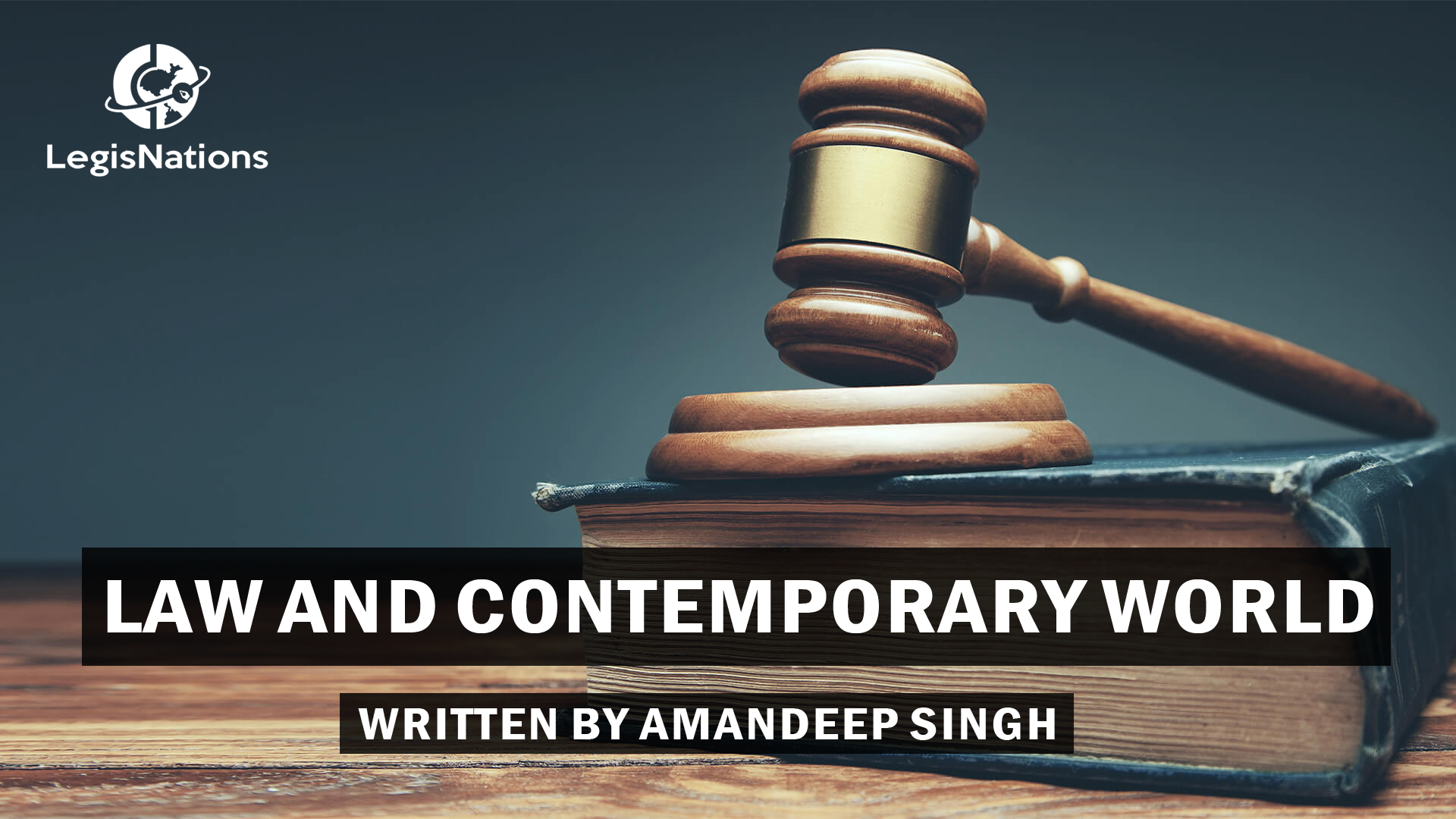INTRODUCTION
Law is a normative and regulatory system and mechanisms as a means towards justice. Law ways must lead to orderly progress of the nation. Aware law men are avant garde giving pragmatic shape to the felt necessities of the time. The point here is that if Law is to be living, creative innovations and dynamic synthesis are essential to the rule of law and constitutional order. This is not legal romantics but simple realism and communal sensitivity.
There is no period such as 20th century in human history with such an innovation that has produced such incredible and significant changes in all walks of human life such as social, political, economic, cultural, military strategic operations, academics, etc. To understand the contemporary world, a little understanding of history is important. Foreign laws have frequently been grafted upon indigenous laws of India. The legal institutions introduced by foreign governments were readily accepted by the Indians in the past. But law needs to be changed with the evolution of the society. Hence, the world and its biggest democracy (India) has been successful in developing laws which cater the changing society. This article will further deal with the major developments in the contemporary world and its relation to Indian law.
EVOLUTION OF TECHNOLOGY
The modern world is of the cyber space, 21st century gives us a new world of internet. The IT revolution has created a digital world, which is the biggest challenge to the legal system all over the world. Paperless contracts, digital signatures, online transactions have taken the legal world on the verge to think about the new challenges, thus the internet completely ignores geographical boundaries. Considering the transnational nature of cyber crime, the International community makes it obligatory for the State to enact cyber law. The initial enactment specially deals with contracts, which takes place through the internet in the digital world. Due to this nature of the internet, it raised various challenges not only to the government but also to the trade and individuals of the entire world. Therefore, this new branch of law emerged, because the conventional procedure to prevent crime became useless for offences committed through the computer or internet. The rules and regulations, which deal with the cyberspace internet and its regulations were the need of the hour. Hence, in 2000, Information Technology Law was legislated.
After coming into force of the Information Technology Act, 2000 on 17th October, 2000 appropriate provisions have been incorporated in the substantive criminal law of India. This Act contains wide range of offences such as tempering with computer sources, sending offensive messages, violation of privacy; publishing obscene material, etc. Along with Information Technology Act, 2020, certain amendments have also been made from time to time to the Indian Laws which are required to make the execution of the regular laws in the information technology age. The main object of the IT Act is to facilitate legal reorganization and regulation of commercial activities through electronic medium. This Indian Act is based mainly on the UNICITRAL Model Law A/GES/51/162; dated 30th January, 1997 as well as on the UNICITRAL Model Law on Electronic Commerce. This is only one act in the Indian legal system which is known as the Cyber law of India and it is amended from time to time to fulfill the needs of the Indian Society.
INTELLECTUAL PROPERTY LAW REGIME
Intellectual Property Rights have been traced from Indian perspective in context of the development after the establishment of World Trade Organisation agreement. India joined WTO agreement with TRIPs a mandatory part of the agreement. However, to satisfy TRIPs obligations a time period of 10 years was given to all the developing countries. The protection of Intellectual Property in India has been regulated through various legislations. Indian Patents Act was adopted in 1970 but came into operation in 1972. Similarly, Copyright Act was formulated and adopted in 1957 and Trade and Merchandise Act in 1958 which later on was replaced by Trademarks Act, 1999. Primarily, patents, trademarks and copyrights formed the mainstay of IP protection in India. All this changed after establishment of WTO. After WTO, amendments have been made to these statutes which stand strong for the development of the country. Apart from these statutes, there is The Geographical Indications of Goods Act, 1999, The Designs Act, 2000, The Semiconductor Integrated Circuits Layout Design Act, 2000; and The Protection of Plant Varieties and Farmer’s Rights Act, 2001. Although the journey to reach a TRIPs compliant regime was rather troublesome for Indian Legal System, yet it has given India, yet it has given India footage as the Intellectual Property Investment hub of the 21st century. In today’s intellectual era, India has shown growth in its research and development. In a recent survey it was estimated that trademark and patent filing has increased 20 times as that of previous years. Today, various trademark and patent infringement matters are gaining their significance in the legal story of the country.
DEVELOPMENT OF REAL ESTATE
In recent past, Real Estate sector has gained prominence in India and the World. The increasing demand for real estate development in India brought problems to various class of people. Land in India is classified into various categories like residential, industrial, commercial, etc. certain taxes are to be paid on ownership of this land in accordance with the State laws whether or not land is located in residential area. Real Estate laws were many in India and the recent most law is Real Estate (Regulation and Development) Act, 2016 which was enacted with one of its primary objectives to protect the interests of the homebuyers. One of the major benefits under this act is that value of the property quoted by the builder of the property is based on carpet area not super built up area which was done earlier and further, the Act also makes it mandatory for the builders to disclose the carpet area.
While the Real Estate Laws in India can still be said to be in the early years of its implementation, it is expected that the new legal regime will make interaction between the homebuyers and home builders to a level playing field. The Indian judiciary’s verdicts and observations in cases involving real estate developers and homebuyers have also aided in streamlining the law pertaining to real estate law in India.
CONCLUSION
These laws have changed the intellects of the great minds and gave them diverse areas to research and play the good old game of politics and society. At this point of time where a deadly virus has hit the world, these laws do not have any role to play but one statute was made in the year 2005, The Disaster Management Act which is helping India to combat corona virus. The Epidemic Diseases Act, 1897 has no meaning in today’s world. Post COVID-19, India will stand strong in this contemporary world because it will stand on the pillars of these new laws which were enacted for the betterment of Social Justice and to serve the society.


